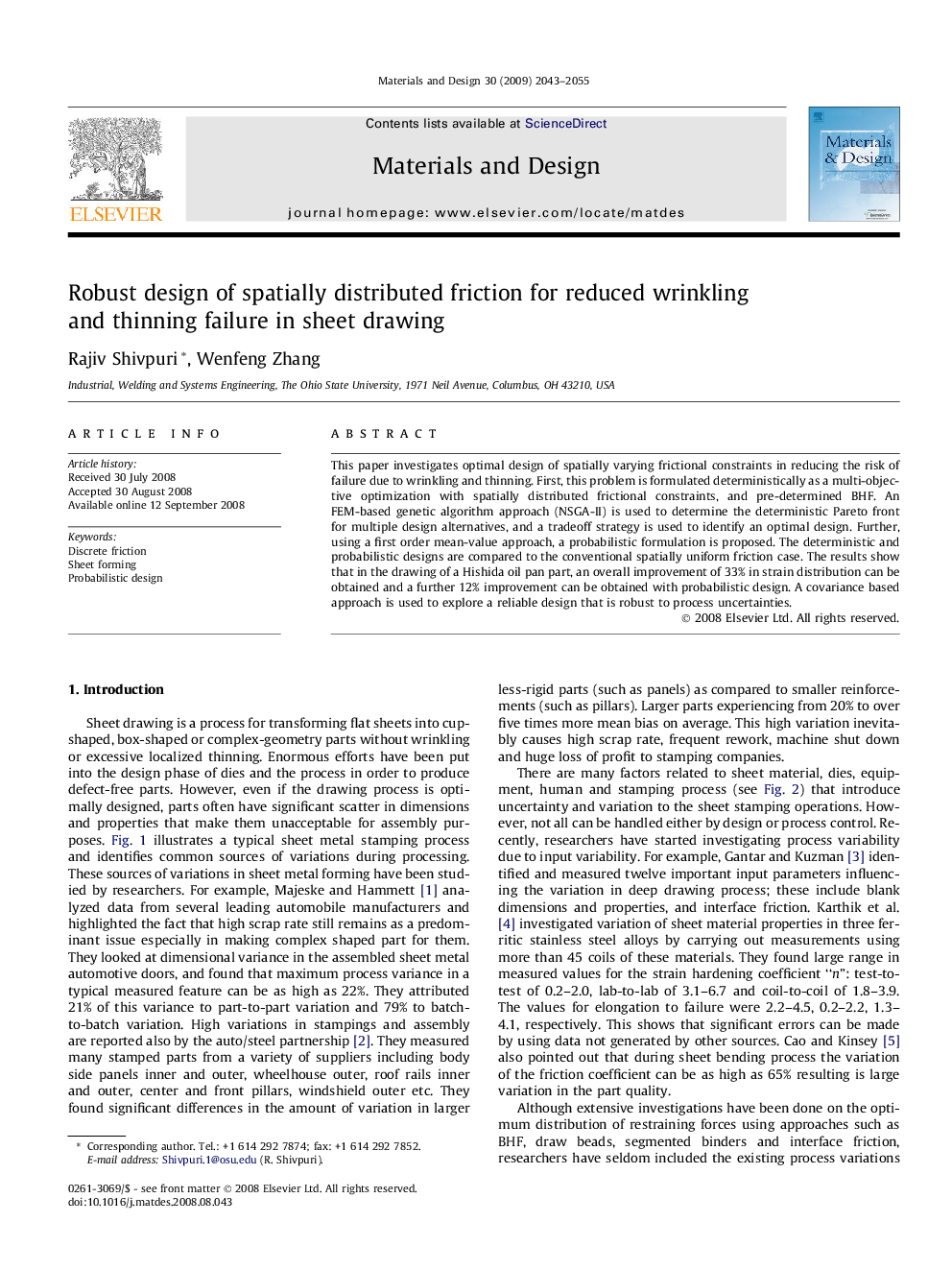| Article ID | Journal | Published Year | Pages | File Type |
|---|---|---|---|---|
| 832721 | Materials & Design (1980-2015) | 2009 | 13 Pages |
This paper investigates optimal design of spatially varying frictional constraints in reducing the risk of failure due to wrinkling and thinning. First, this problem is formulated deterministically as a multi-objective optimization with spatially distributed frictional constraints, and pre-determined BHF. An FEM-based genetic algorithm approach (NSGA-II) is used to determine the deterministic Pareto front for multiple design alternatives, and a tradeoff strategy is used to identify an optimal design. Further, using a first order mean-value approach, a probabilistic formulation is proposed. The deterministic and probabilistic designs are compared to the conventional spatially uniform friction case. The results show that in the drawing of a Hishida oil pan part, an overall improvement of 33% in strain distribution can be obtained and a further 12% improvement can be obtained with probabilistic design. A covariance based approach is used to explore a reliable design that is robust to process uncertainties.
